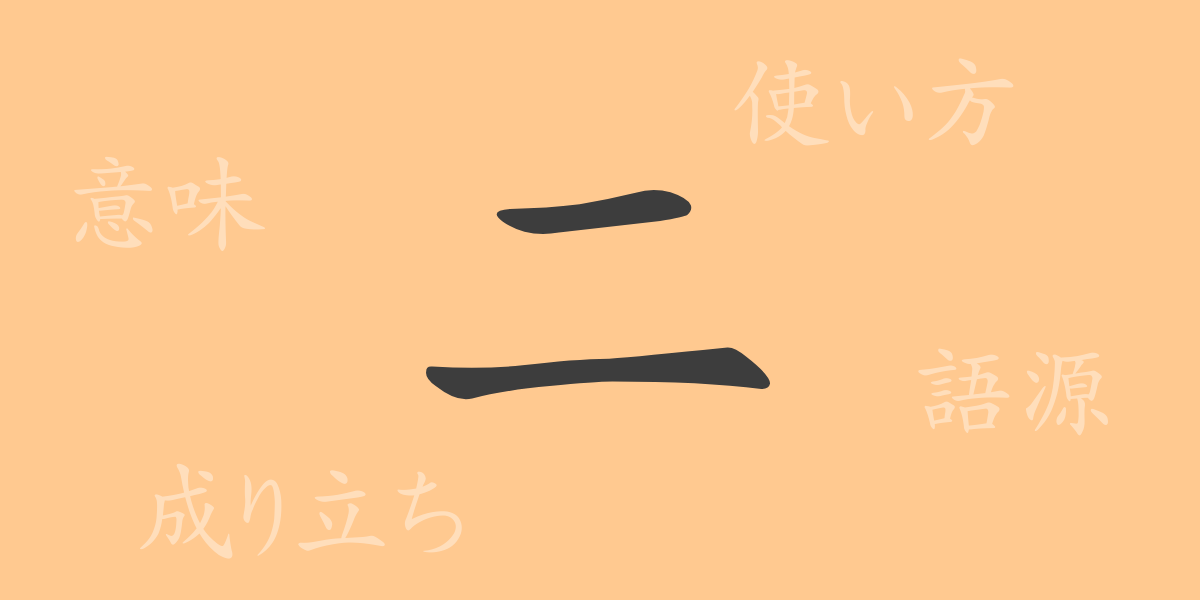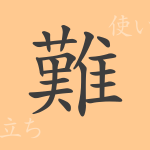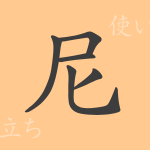Numbers are often thought of as mere symbols representing counts, but each number has a deep historical and cultural background, imbuing them with a variety of meanings. The Japanese Kanji ‘二 (に)’ is no exception. This article delves into the Kanji ‘二’, exploring its origins, meanings, uses, readings, and its presence in idioms and proverbs, uncovering its full scope.
Origins of ‘二 (に)’ (Etymology)
The Kanji ‘二’ represents the number ‘2’ and can trace its origins back to ancient China’s oracle bone script. It was originally depicted as two horizontal lines stacked, symbolizing the number ‘2’. This simple representation has been intuitively used to count numbers across the ages.
Meaning and Usage of ‘二 (に)’
The Kanji ‘二’ primarily denotes the number ‘2’, used to indicate sequence, quantity, or order. Metaphorically, it is also used to mean ‘another’ or ‘second’. For example, ‘二の足を踏む’ does not directly denote a number but expresses hesitation.
Readings, Stroke Count, and Radical of ‘二 (に)’
The Kanji ‘二’ is marked by its simplicity, reflected in its readings and structure.
- Readings: On’yomi ‘ニ’, Kun’yomi ‘ふた’ or ‘ふた.つ’
- Stroke Count: 2 strokes.
- Radical: ‘一’ (いちぶしゅ)
Phrases, Idioms, and Proverbs Using ‘二 (に)’ and Their Meanings
The Kanji ‘二’ features in various idioms and proverbs, reflecting the richness of Japanese expression. For instance, ‘二兎を追う者は一兎をも得ず’ teaches that chasing two goals simultaneously results in achieving neither. ‘二の足を踏む’ illustrates hesitancy in action, while ‘二束三文’ describes something being extremely cheap.
Conclusion on ‘二 (に)’
Thus, the Kanji ‘二’ not only indicates a number but also carries diverse meanings within Japanese expressions. This simple yet powerful character plays a significant role in Japanese culture, with each usage reflecting the wisdom and sensibilities of the Japanese people.

























